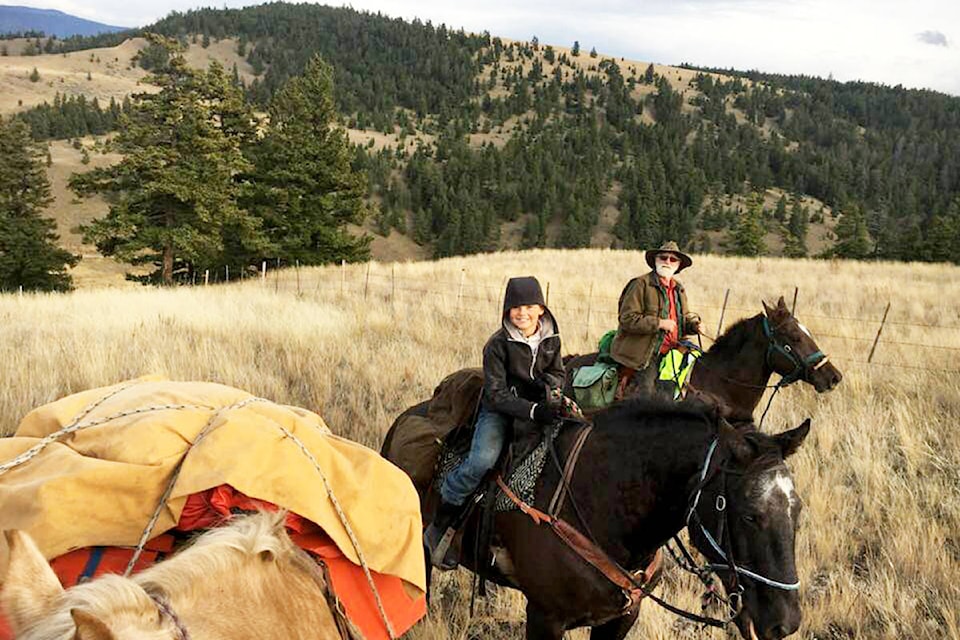With not much of a summer break this year, I had the privilege of joining a son and grandson on a horseback pack trip into the Churn Creek Protected Area last weekend.
The Churn Creek runs into the Fraser where the road to the Gang Ranch crosses that mighty muddy river.
We saw and met many hunters in the area, but no other visitors like us. With some exceptions, the whole place was abundant in grass.
The snow was restricted to the peaks around – Black Dome, Red Mountain, and the Marble Range back across on the Fraser west of Clinton.
Driving with a load of horses it is about two hours south of Williams Lake out past Alkali Ranch, Esk’etemc and Dog Creek.
For this time of year, the weather was moderate.
On horseback with flat shoes all round on the horses, one hopes for no snow and ice.
But a wet year it has been and so lots of water was running in the irrigation supply system that feeds the Empire Ranch which is in the middle of the protected area.
It is over twenty years since the protected area was created.
Read More: RANCH MUSINGS: Permaculture in Canada and its commercial viability
It was chosen for protection against major industrial development because of the uniqueness of the natural grasslands: lower, middle and upper. There were some benchmarks (reference measurements) on the vegetation.
Over the decades since ranching was developed in the area, there have been times when the grazing hit the grasslands pretty hard.
Once protected, the area had the cattle population reduced in order to let the land restore itself.
This process has been helped along by periodic burning of the grass which sets back the sagebrush and the encroaching fir trees which threaten to take over unless fire is used as a remedial tool.
The protected area is like a park except that it allows some non-consumptive uses such as grazing and hunting. Vehicular access is limited in order to protect the precious grasslands from disturbance and erosion.
Personally, I like travelling by horseback since the horses watch their feet and I can look all around and I know where my feet are (they are supposed to be in the stirrups).
This was not only to be a break for Dad and Grandpa (me), but an instructive experience for the nine-year-old grandson.
He had the most trusted horse. He is learning about camping and travelling with horses.
Read More: RANCH MUSINGS: Where Love and Business Intersect
The terrain is friendly to horseback beginners yet rewarding to the novices. Wide open spaces inspire.
Waving silver and wheat-coloured grasses create an ocean of moving colour. This time of the year the simple, subtle grey, cream, tan, brown, yellow and red hues paint the landscape.
Three days in this sub-heavenly paradise, removes one from the bustle of the sensory overloaded urban life of small towns. But once removed the return is almost numbing.
“Why couldn’t we just stay?” becomes the question. Indigenous people and settlers before us did just that.
David Zirnhelt is a rancher and member of the Cariboo Cattlemen’s Association. He is also chair of the Advisory Committee for the Applied Sustainable Ranching Program at TRU.
